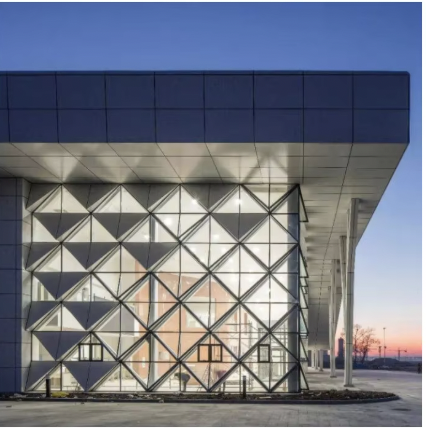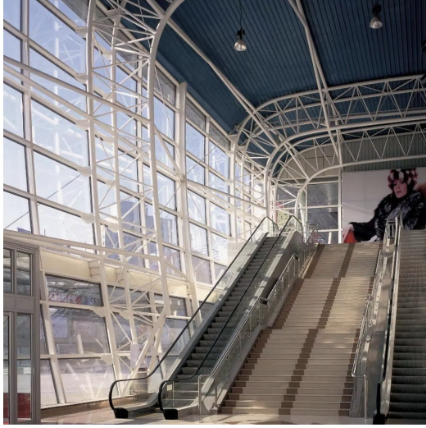Significant Reduction in Construction Time
Streamlined Prefabrication Process
Prefabricated steel buildings are changing how fast projects get done because parts can be made in factories where conditions are predictable. No more waiting around for bad weather or dealing with unexpected problems at construction sites, which makes everything run much smoother overall. Research shows these prefab techniques work really well, with some reports saying construction can take about 30 percent less time than old school methods. The time saved means projects finish sooner, so investors see their money back faster. For anyone involved in real estate development, this kind of speed advantage matters a lot when planning budgets and timelines.
Faster On-Site Assembly
Prefabricated steel structures offer real benefits when it comes to how quickly things get put together on site. The parts show up already made and just need to be assembled, which cuts down both time and money compared to traditional building approaches. Some industry data suggests assembly times can drop around half, helping finish jobs even when deadlines are tight. Faster assembly means workers spend fewer hours onsite, and this helps avoid those nasty budget overruns that happen when projects drag on longer than planned. Contractors love this because it makes their scheduling so much easier to manage.
Accelerated Project Timelines vs. Traditional Methods
Using prefabricated steel for construction has really changed how fast projects get done compared to old school building methods. Most builders report that steel structures take about half as long to complete as traditional approaches. Faster completion means tenants can move in sooner, so businesses don't have to wait around empty handed before they start making revenue. Time is money in construction, and getting buildings finished quicker gives developers a real edge over competitors still using slower techniques. Prefab steel makes sense for anyone looking to speed things up while keeping costs under control. Many commercial property owners are switching to this method because it cuts down on waiting periods and gets their investments working harder from day one.
High Durability and Weather Resistance
Structural Integrity in Extreme Conditions
Steel buildings made off site can handle all sorts of tough conditions including strong winds, heavy snowfall, and seismic activity too, which means they last a really long time. People building in areas where bad weather is common find these structures work great because they just don't fall apart when things get rough outside. Some studies show good quality steel frames often stick around for over half a century without major issues, holding up way better than traditional materials like timber or standard concrete during storms or other harsh environmental events. Take the oil and gas sector for instance, where equipment needs to survive not just regular wear and tear but also unexpected disasters. The toughness of prefabricated steel solutions gives companies peace of mind knowing their facilities won't crumble under pressure from either Mother Nature or industrial demands.
Superior Resistance to Environmental Elements
Steel buildings made off site stand up pretty well against Mother Nature's worst because manufacturers treat the materials before shipping them out. They're built to fight back against rust, mildew growth, and bugs getting inside, which works great whether it's freezing cold or super humid where they get installed. The special paints and protective layers applied during manufacturing really boost how long these structures last, particularly when placed near saltwater or industrial areas with heavy pollution. Most folks who own steel buildings find they keep working just fine decade after decade without looking run down or falling apart. And let's face it, when something doesn't need constant repairs or replacements, that means lower costs over time while still being good for the planet.
Long-Term Performance with Minimal Maintenance
Prefab steel buildings really stand out when it comes to lasting performance without much maintenance work. Steel structures just need way less upkeep compared to wood or concrete options, which means big savings on overall costs throughout the building's lifetime. People who own these structures often see around 20 to 30 percent less spending on maintenance since steel holds up so well against daily wear and weather damage. Fewer fixes and replacements down the road free up money and time that would otherwise go toward constant repairs. Companies that go with steel construction spend less time worrying about fixing things and more time running their actual business operations, which makes everything run smoother in the long haul.
Design Flexibility for Commercial Applications
Customizable Layouts and Configurations
Prefabricated steel buildings have this modular quality that really lets businesses customize their commercial spaces in ways traditional construction just cant match. The flexibility means companies can actually design layouts around exactly what they need operationally, rather than fighting against existing structures. Take warehouse operations for example many need to reconfigure storage areas as inventory grows or shifts, something that would require tearing down walls in conventional buildings. Steel prefab structures handle these adjustments much easier since components snap together like building blocks. That kind of adaptability is why so many small to mid-sized businesses are turning to steel when expanding or remodeling. They save thousands on renovations while still getting exactly the space they need for day to day operations.
Adaptable to Various Industries and Functions
Steel buildings aren't just for one type of business either they work really well across many different fields. Retail stores, warehouses, even schools have started using prefabricated steel structures because they can be adapted so easily. Take look at some real world examples too. A lot of school districts built new classrooms with steel frames when budgets got tight, while hospitals added extra wings without breaking ground on traditional construction sites. What makes this approach so appealing is how fast everything gets put together compared to regular building methods. Plus, companies love being able to tweak designs according to their specific requirements rather than working around what's available off the shelf.
Integration of Architectural Features
One big plus of prefabricated steel buildings is how they let designers add architectural flair while keeping everything structurally sound. When companies work with architects on these projects, there's room for creative freedom in both looks and function. The buildings end up matching brand identities and practical needs at the same time. From sleek modern designs to classic styles, steel prefab structures handle pretty much any visual request thrown their way. Businesses get nice looking spaces that actually work well too, all without cutting corners on performance or safety standards.
Cost-Effective Construction Solution
Reduced Labor Requirements
Prefabricated construction really cuts down on labor expenses, which makes it an excellent choice when looking at cost effectiveness. The reason behind this is simple enough most of the actual building happens away from the job site in factories where conditions are much better controlled. That means we don't need nearly as many people working onsite compared to traditional methods. Labor savings can actually reach around 40% according to industry reports, though numbers might vary depending on specific circumstances. Beyond just saving money upfront, there's another benefit too projects tend to finish quicker since everything fits together so well from the start. Companies end up spending less overall while getting their buildings completed sooner rather than later.
Material Efficiency and Waste Reduction
Steel structures made off site tend to use materials much better than traditional methods and create far less construction waste, which makes them pretty good for the environment. When everything is manufactured precisely in factories, there's just not as much leftover material lying around waiting to go to landfill. The builders don't have to deal with so much scrap either, which cuts down on what they spend getting rid of all that junk. Industry reports suggest somewhere around a quarter less waste ends up being generated when these prefabricated steel parts are used instead of conventional building techniques. Beyond helping the planet though, this approach actually saves money too, which explains why more contractors are starting to look seriously at prefabrication options these days.
Long-Term Savings on Maintenance
Prefabricated steel buildings tend to save money on maintenance in the long run because they just hold up better than most other options. They're built to take a beating and need far fewer fixes throughout their life span when compared to wood or concrete alternatives. Some studies have found that businesses actually cut down on operating expenses by around 20 percent thanks to how these buildings last so long without needing constant attention. For anyone looking at building projects that will stand the test of time, this kind of cost saving makes steel prefab a smart choice financially speaking.

Easy Scalability for Future Expansion
Modular Expansion Capabilities
Steel buildings made off site come with built in flexibility for adding on later, which makes them really scalable solutions. When companies need to expand, they don't have to tear down what's already there. Just bolt on another section when space runs out. The modular nature means businesses can simply attach new areas or install extra features as their requirements change through different stages of growth. This saves money and time compared to traditional construction methods. Most small to medium enterprises find this approach works well because it matches how business needs actually develop over years rather than requiring huge upfront investments.
Minimal Business Disruption During Additions
Modular construction makes expansion projects much less disruptive to daily operations. When companies add onto their facilities, they don't have to shut everything down for weeks at a time. Many businesses that opt for prefabricated steel structures notice how much faster they get back up and running after construction compared to old school building methods. This matters a lot when trying to keep production lines moving and customer service uninterrupted. Prefab buildings just make sense for growing businesses because they let companies scale without all the headaches that come with traditional construction delays and disruptions.
Adaptable Growth Planning
Prefab steel buildings come with all sorts of design flexibility, letting businesses shape their space exactly how they need it for different stages of growth. What makes these structures so valuable is this ability to match physical space with actual business goals. Companies don't have to build everything at once either. They can expand bit by bit as funds allow or when market conditions change. Steel prefab really works for businesses looking to grow smartly over time. The material stands up to wear and tear while still being cost effective compared to traditional construction methods. Small startups find comfort in knowing they can start modest then scale up later without tearing down walls. Even big corporations appreciate having control over their expansion timeline rather than getting stuck with empty office spaces or underutilized warehouses.
FAQ
What is prefabricated steel construction?
Prefabricated steel construction involves fabricating building components in a controlled factory environment before transporting them to the site for assembly.
How much can construction time be reduced with prefabrication?
Using prefabrication methods can reduce construction time by up to 30% compared to traditional building methods.
Are prefabricated steel structures durable?
Yes, they are designed to endure extreme weather conditions and have a lifespan exceeding 50 years.
What are the cost benefits of prefabricated steel buildings?
These buildings offer reduced labor costs, material efficiency, waste reduction, and long-term maintenance savings.
Can prefabricated steel buildings be expanded easily?
Yes, their modular design allows for easy expansion with minimal disruption to existing structures.






